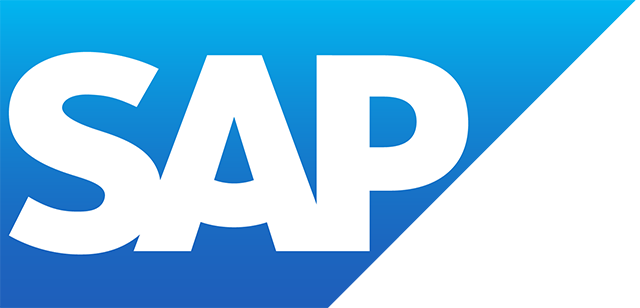SAP POS
Filter By
Browse By
- SAP Analytics and AI
- SAP Application Development and Integration
- All SAP Application Development and Integration
- SAP ABAP
- SAP ABAP Development Tools
- SAP ABAP Test Cockpit
- SAP API Management
- SAP BAPI
- SAP Basis
- SAP BRF
- SAP Business Application Studio
- SAP CMS
- SAP Design Studio
- SAP Development Tools
- SAP DevOps
- SAP EAI
- SAP EDI
- SAP Extension Suite
- SAP Fiori
- SAP Fiori Elements
- SAP Integration Suite
- SAP Low Code Application Development
- SAP Low Code Automation
- SAP Netweaver
- SAP Release Management
- SAP UI5
- SAP Web Application Server
- SAP Web IDE
- SAP Business Process Management
- SAP Center of Excellence
- SAP CIO
- SAP Customer Experience
- SAP Data and Data Management
- All SAP Data and Data Management
- SAP BW
- SAP BW/4HANA
- SAP Crystal Reports
- SAP Data Archiving
- SAP Data Center
- SAP Data Governance
- SAP Data Integration
- SAP Data Migration
- SAP Data Quality
- SAP Data Services
- SAP Data Strategy
- SAP Data Visualization
- SAP Data Warehouse Cloud
- SAP DMS
- SAP Document Control
- SAP EIM
- SAP ETL
- SAP ETL Tools
- SAP HANA
- SAP HANA Administration
- SAP HANA Deployment Infrastructure
- SAP HANA Studio
- SAP Master Data
- SAP Master Data Governance
- SAP MDM
- SAP Enterprise Architect
- SAP Enterprise Asset Management
- SAP ERP
- SAP Finance
- All SAP Finance
- SAP Accounting
- SAP AR AP
- SAP Asset Accounting
- SAP Billing Systems
- SAP BPC
- SAP BRIM
- SAP Cash Management
- SAP Central Finance
- SAP Controlling
- SAP COPA
- SAP Cost Center Accounting
- SAP Currency Risk
- SAP e-invoicing
- SAP FICO
- SAP Finance Automation
- SAP Advanced Financial Closing
- SAP Financial Consolidation
- SAP Financial Planning
- SAP FX Risk
- SAP General Ledger
- SAP Global Tax Management
- SAP Hyperion
- SAP Order to Cash
- SAP Payment Processing
- SAP Profitability Analysis
- SAP Rebate Management
- SAP S/4HANA Finance
- SAP SWIFT Compliance
- SAP Treasury Management
- SAP Universal Journal
- SAP Governance Risk and Compliance
- SAP Human Capital Management
- SAP Intelligent Technologies
- SAP Platform and Technology
- All SAP Platform and Technology
- SAP Business Technology Platform
- SAP Cloud
- SAP Cloud Connector
- SAP Cloud Integration Platform
- SAP Cloud Migration
- SAP Cloud Platform
- SAP Cloud Providers
- SAP Cloud Strategy
- SAP Digital Signature
- SAP Container Platform
- SAP HANA Enterprise Cloud
- SAP Digital Asset Management
- SAP Smart Forms
- SAP HEC
- SAP Digital Integration Hub
- SAP Hyperscalers
- SAP Infrastructure
- SAP Messaging
- SAP Quality and Testing
- SAP Security
- SAP Spend Management
- SAP Supply Chain Management
- All SAP Supply Chain Management
- SAP APO
- SAP Asset Management
- SAP Business Network
- SAP Digital Manufacturing Cloud
- SAP Digital Twin
- SAP EWM
- SAP IBP
- SAP Inventory Management
- SAP Label Printing
- SAP Logistics
- SAP Manufacturing
- SAP Manufacturing Automation
- SAP MES
- SAP MII
- SAP MM
- SAP MRO
- SAP MRP
- SAP Order Management
- SAP Plant Maintenance
- SAP PLM
- SAP Production Planning
- SAP S&OP
- SAP SD
- SAP SPM
- SAP Supply Chain Planning
- SAP Track and Trace
- SAP Transportation Management
- SAP System Administration
What Is Point of Sale?
Point of Sale (POS) represents the customer payment transaction for a brick and mortar or online retailer. As part of the POS, retailers rely on hardware and software to complete the transaction and process the payment.
POS: More than a Transaction
While the POS may appear simply as a transactional activity, it has implications for customer experience and profit for the retailer. Customers want and expect a checkout process that is quick, hassle-free, and easy to navigate.
What Is Point of Sale?
Point of Sale (POS) represents the customer payment transaction for a brick and mortar or online retailer. As part of the POS, retailers rely on hardware and software to complete the transaction and process the payment.
POS: More than a Transaction
While the POS may appear simply as a transactional activity, it has implications for customer experience and profit for the retailer. Customers want and expect a checkout process that is quick, hassle-free, and easy to navigate.
The POS is also critical for understanding customer preferences in terms of product selection and variety. Retailers gain valuable analytical insight into which products are selling, at what time of day, and in what quantity. This can provide better decision-making for the marketing and sales teams.
Lastly, integration between the POS, inventory management, and operational systems is critical for maintaining supply and demand balance and identifying potential revenue opportunities. Replenishment is essential for retailers to ensure the product is on the shelf where and when customers need it. Data from the POS should also be shared with suppliers to collaborate on product promotions and new product introductions.
SAP Customer Checkout Application
SAP’s point of sale solution is SAP Customer Checkout. According to SAP, the following are key POS capabilities of the application:
- Manage sales, returns, payments, coupons, and gift cards with a central POS system
- Access real-time reports, control sales and financial results, and extend and scale the application with flexibility
- Integrate with SAP S/4HANA or other ERP systems, or use as a stand-alone application
Key Consideration for SAPinsiders
- Case Study: AGRAVIS Transforms Its POS System for the Future. In this SAP case study, German agricultural trading company AGRAVIS needed to replace its legacy POS system to meet new cash register regulations and future POS transaction requirements. The company wanted a solution that integrated with its current software landscape, but also created a single source of truth of real-time sales and inventory data. AGRAVIS also required a solution that enabled capabilities for future omnichannel retailing. It chose the SAP Customer Checkout application with native SAP S/4HANA integration and linkage to existing legacy warehouse management systems.
A vendor in the point-of-sale space includes: Verbella.
365 results
-

 Premium
Premium
Streamline Invoice Processes and Improve Customer Relationships by Implementing SAP SD Retroactive Billing
Reading time: 14 mins
Implementing retroactive billing, available to you in SAP ERP Central Component 6.0, addresses the issue of changing pricing after invoices have already been sent. Learn the configuration steps needed to run retro-billing across modules in your SAP ERP system. Maintain your good customer relationships using this accurate, consistent business process. Key Concept Companies typically have...…
-

 Premium
Premium
Crossing Transport Request Boundaries with ChaRM
Reading time: 18 mins
ManagerIn this primer on the basics of Change Request Management (ChaRM) and how it can benefit your organization, learn how ChaRM controls changes from their creation to the transport and productive systems. Find out how to manage several change projects in complex landscapes using this tool and how SAP moved change management forward by creating...…
-

 Premium
Premium
Use Functional Areas to Enhance Your Cost-of-Sales Reporting
Reading time: 10 mins
Learn the definition of cost-of-sales reporting and how it is distinguished from period-based reporting. Follow the steps to define and derive functional areas to facilitate cost-of-sales reporting. Discover the benefits of cost-of-sales reporting by functional area and how it contrasts with other methods of cost-of-sales reporting that are more commonly used in the SAP system...…
-
-

 Premium
Premium
Run the Right Rolling Forecast Report with Actual Data from SAP SEM-BCS
Reading time: 11 mins
Learn how to work around a reporting issue that occurs when you run a report on SAP planning InfoProvider (SAP NetWeaver Business Warehouse Integrated Planning [BW-IP] or SAP Strategic Enterprise Management-Business Planning and Simulation [SEM-BPS]) for planning data and actual data from SAP Strategic Enterprise Management-Business Consolidation System (SEM-BCS). The issue happens since SEM-BCS is...…
-

 Premium
Premium
Create Online Vendor Payments Using Payment Requests
Reading time: 14 mins
In the standard payment transaction F110, outgoing payments are all based on financial documents. By using online payments, you can create payments without any underlying financial document. Instead of a financial document, the basis for the online payment is a payment request. You create the payment requests with transaction FIBLAPOP and the outgoing payment with...…
-

 Premium
Premium
12 Best Practices for Information Lifecycle Management Using the NLS Interface
Reading time: 13 mins
Using Information Lifecycle Management (ILM) and Nearline Storage (NLS) techniques enables organizations with SAP NetWeaver BW implementations to improve warehouse performance while considerably reducing database administration costs. In addition, using ILM with NLS improves your ability to manage and satisfy service level agreements. Discover the important aspects of ILM and garner best practices for using...…
-

 Premium
Premium
Reconcile Differing Financial Periods with Fiscal Year Change
Reading time: 10 mins
Restructure your financial and special periods to unify your financial reporting under one fiscal year. Key Concept The fiscal year variant is a key configuration parameter that you can use to define: The number of posting periods and special periods in a fiscal year How the system determines posting periods when posting transactions Fiscal year...…
-
-

 Premium
Premium
Integrate Service Vendors into Your SAP Time Sheet Process
Reading time: 14 mins
Many companies increasingly use service vendors to staff their projects. Integrating those contractors into your SAP processes reduces administrative tasks, cuts time-to-close, and increases the quality of your financial data. Many companies are not using the provided functionality to its full extent, some because they are unaware of it and others because of drawbacks generated...…
-

 Premium
Premium
Make SAP Automatic Credit Management Work for You
Reading time: 14 mins
Credit management will likely always be a manual, ad hoc process to some degree, but you can make it easier. Learn how to use a tool you already have to automate the process as much as possible. Key Concept SAP Automatic Credit Management first became available with R/3 Release 3.0. Using settings in FI and...…
-

 Premium
Premium
View Your Profit and Loss Data and Analyze Your Investments Using Visual Composer
Reading time: 13 mins
See how two applications of Visual Composer, the Profit Center Accounting dashboard and the Investment Approval template, work in conjunction with SAP ERP financial functions. Discover the elements of their user interfaces and see how they can help your company evaluate its financial data. Key Concept Visual Composer is a part of the EP usage...…
Become a Member
Unlimited access to thousands of resources for SAP-specific expertise that can only be found here.
Become a Partner
Access exclusive SAP insights, expert marketing strategies, and high-value services including research reports, webinars, and buyers' guides, all designed to boost your campaign ROI by up to 50% within the SAP ecosystem.
Upcoming Events
Related Vendors
Your request has been successfully sent


